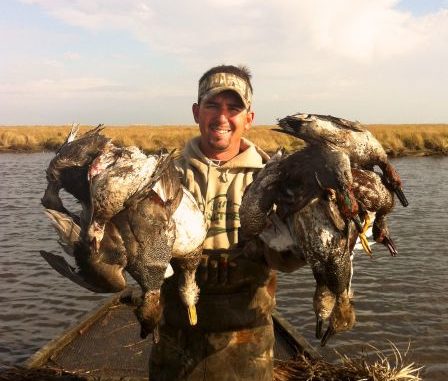
Capt. Chris Pike is used to keeping an eye on the water while he is speckled trout fishing, and that has helped him to understand exactly how water conditions — namely high water and low water — affect duck hunting in the Southeast Louisiana marsh.
“I don’t want a real high tide, and I don’t want a real low tide,” he said, “but I don’t always get everything I want in the marsh. Every front we get is going to drop the tide really low, so you learn to deal with that quickly.
“Years ago, I always heard to hunt the day after the front, but nowadays it seems like three or four days after the front when the water comes back up to normal and you can hunt because the birds aren’t rafting up in those big bays — that’s when you want to hunt.”
Although he prefers hunting what he considers normal water levels, Pike has learned how to adapt to water that is too high or too low so he continues to kill ducks when other hunters might struggle.
Too little water pushes ducks out of the ponds and into the big, wide-open lagoons and bays where they will raft up in large groups. Once they do that, you can go set up in the middle and try to shoot them, but it’s hit or miss.
“You’re either going to knock them out, or you’re not going to kill a duck,” Pike said. “To set up in the middle of a bay, the best thing to do is to get as much brush as you can and build a makeshift blind in a pond you know ducks historically want to be when the water gets low.”
Pike understands that putting up a blind early allows ducks plenty of time to get used to this brand new brushy “island” before duck season. He fashions this kind of blind out of rosseau cane or bamboo so he can pull his mud boat right into it.
While a pre-made blind is best for hunting the middle of the open bays, Pike has had some success hunting out of a boat blind in these same conditions.
However, if he goes out there on a sunny day with no wind, he knows it’s going to be hard to kill ducks.
“But if you go out there with a boat blind with a really low tide on a cloudy day with a lot of wind, you can kill ducks,” Pike said. “But your boat’s going to have to be covered completely to pull it off.”
When the water is too high, ducks that were feeding in 1 foot of water now find themselves having to deal with 2 feet of water. They adapt by moving into newly flooded ponds that now have a foot of water.
“It can work to your advantage because what happens when the water comes up is a lot of the seeds that are in the grass, they start breaking off the roots,” Pike explained. “Ducks flood into the newly flooded marsh.”
Pike said hunters should mainly look for marsh that has just enough water to provide a landing zone for ducks and enough depth to put your decoys.
“When it’s too high, anything off your main ponds that is now flooded is what works,” Pike said. “Too-high water forces them to find somewhere new to feed because they can’t reach bottom where they were before the water came up.”

